This method is considered traumatic, as the fingers must be placed in the cat's mouth and it may bite at any time.
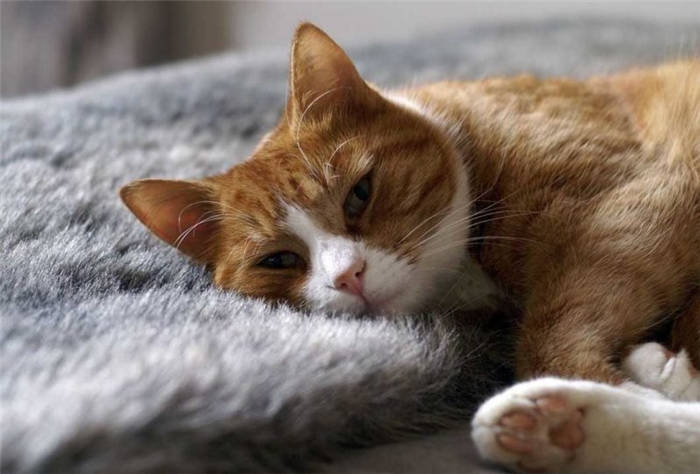
- Forced feeding of a cat needs advice
- A cat with CPN.
- What to feed a newborn kitten
- How to feed an adult cat
- How to feed a kitten from a syringe: methods, portions, food, regime
- How to feed a cat properly with a syringe?
- Possible difficulties
- Forced feeding of cats
- What can I feed?
- How often should the procedure be carried out?
- Contraindications
- How to force-feed a cat?
- Organization of the procedure
- Feeding from the finger
- How to force-feed the cat?
- How many days should a cat be force-fed?
Forced feeding of a cat needs advice
Good afternoon, the cat is sick, asks to eat, but when you give her food, she eats one bite and buries the bowl (have already tried almost all foods). Need to force-feed. Bought a syringe 20 ml. and food Hils ID pate, pate a little more diluted with water, I put all this stuff into the syringe and try to feed the cat. But there is one problem, for some reason even in this diluted state pate very badly comes out of the syringe (although it turns out quite a slurry), at first extruded normally, then as if gets stuck and neither there nor here. One hand I hold the cat, one hand syringe and squeeze one hand does not work, if you press the syringe with two hands then the food from the syringe just shoots out splashing all around and then again goes well, and then again all over again.
Maybe someone has had such problems, is there a secret or any tips on how best to do?
Good afternoon. Had the same problem with force-feeding. Here's what I did: I also fed wet feed, puree with a little water in a blender – the texture is more homogeneous and less likely that the syringe is somewhere – something clogged. This porridge (made all day at once) was kept in the refrigerator, and the portion for feeding still a little bit diluted with hot water and into the syringe, so it does not "shoot". And if you just stir it with water – shot, and I, and the cat in the feed were forever. Also try using a 10 ml syringe, it is more convenient. I'd rather fill it twice than suffer with 20 ml, especially if you don't have anyone to help you hold your pet.
I had a similar experience. I diluted it with water and mashed it to a smooth consistency, similar to ProPlan pates. We eventually switched to baby spoons made of plastic and with silicone attachments, because both the cat was getting tired of being fed for so long, and I was getting angry, and she saw it. The stress of feeding was noticeably less for everyone.
Have you thought about getting her to eat on her own? With Fortiflora or Viyo, for example. Putting these probiotics in her food, if the doctor says yes to them. Maybe she would start eating on her own.
A cat with CPN.
Dear forum mates, Good day! Share your experiences with us on how to feed the cat and give subcutaneous infusions correctly if we are away from home (working) from 8 am to 9 pm. Let's assume that infusions can be done early in the morning and late at night. But what about feeding?
I do it at 6-30 in the morning, leave dry food in the afternoon–eats only if very hungry–and repeat in the evening when you come.Used to run at lunchtime
Thanks for the answer! Lunchtime, unfortunately, is not an option. Do you break the daily ration into morning and evening if he doesn't eat in the afternoon? How long do subcutaneous infusions take? I read your story, you and your kitty are doing great!
https://www.youtube.com/watch?v=CsLA3mOuVhU&app=desktop
We take a 2 ml syringe and put 1.5 ml of food in it…
Don't try to take a bigger syringe, it won't fit in his throat, and the cat will spit up not because he doesn't want to, but because of the physiological characteristics of his tongue…
It depends on how much the cat weighs – mine is about 5 kg – he needs 2-3 sachets a day
I've been feeding from a syringe 20 == 2 syringes at a time — takes max 5 minutes without food preparation
At first he spit up… now he's fine.
But I don't always feed him that way – he usually eats by himself. But if he's not eating, I give him at least two sachets.
I give him a subcutaneous infusion in a 50 ml syringe — I warm it up a little and pour it in — at least 5 minutes.
Thank you for the answer! Lunchtime, unfortunately, is not an option. Do you break the daily ration into morning and evening if he doesn't eat in the afternoon? How long do the subcutaneous infusions take? I read your story, you and your kitty are doing great!
My subcutaneous infusions personally took me about 5 minutes (including heating up the solution and fetching the cat from under the bed). It was worse with feeding – from 40 minutes to 2 hours per session, but it depends on how the cat perceives the procedure, some treat it much better than my cat did, and therefore the process is much faster.
Yes, in your case both feeding and dripping in the morning and evening. It's perfectly normal for a cat to eat 2 meals a day at long intervals, the main thing is to get the daily norm eaten in the end.
What to feed a newborn kitten
Blind babies are very sensitive to the fat content and composition of food. If kittens were torn from their mother immediately after birth, their intestines will be populated with the microflora that will be in the first food eaten (drunk). In the natural environment, the cat feeds the babies colostrum, with artificial feeding this is not possible.
ОTake note! Not so long ago it was thought that kittens could be fed cow's milk, today this method is strongly condemned. But that doesn't change the facts, kittens are fed diluted cow's milk and even store bought milk. Yes, the babies have less chance of survival, but they do.
More acceptable milk goat's milkalso diluted with boiled water. The fact that goat milk has a stronger and richer microflora. To be clearer, it is the bacteria, their numbers and vitality that play a major role in digestion. This is the reason why kittens often die from store-bought milk – it's pasteurized, which means it contains no bacteria…you could say it's dead.
A third, not always the best option is cat milk substitute.. It is sold as a powder, which must be diluted with warm water. The chemical composition is as close as possible to cat's milk, but contains plant sugar. There have been cases where newborn kittens have had food allergies to powdered adapted milk.
Another fairly common option is baby formula labeled "from 0" (from birth). The downside is that they also contain sweeteners. Even though all the ingredients in the formula are safe, they are unnatural for a kitten. The plus is that the formula can always be prepared in small quantities and fed to the kitten with fresh, warm "milk."
How to feed an adult cat
Force-feeding an adult cat is only done as prescribed by a veterinarian. Quite often the doctor prescribes subcutaneous and intravenous infusions of nutrient solutions in order not to overload the intestines of the animal.
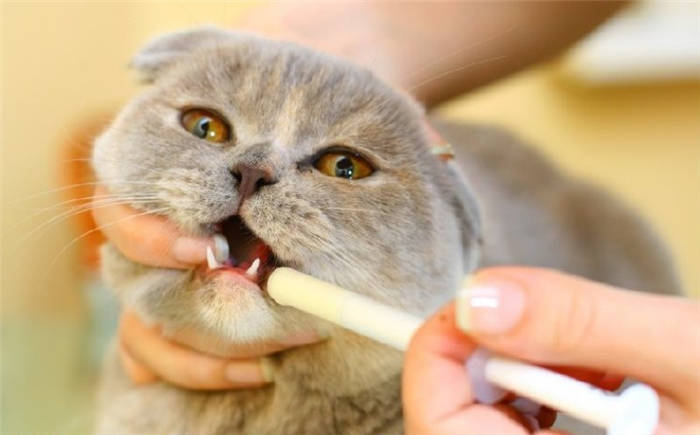
Please note! For some intestinal infections, cats are kept on drips and complete starvation for 3-5 days at a time.
When it comes to the fact that the cat can, but does not want to eat, you should try to provoke hunger. The basic tools are:
- Smell – There is a saying "appetite comes with food", in fact, the desire or unwillingness to eat something depends on the attractiveness of the smell. As a stimulant you can use gravy from industrial feeds.
- A personal example – Eat in front of the cat and place a bowl of cat treats nearby. The food should be soft. Do the following: take a sandwich (or other food) in your hand, take a slow bite and start chewing slowly as well. Put the sandwich aside and with the same hand scoop some treats for the cat on your finger and let the cat smell them. Watch the reaction, if the cat licked, you are doing the right thing. If the cat starts to swallow quickly, this is a sign of nausea and force-feeding is inappropriate. If the cat has nausea you can try other, neutral foods or you need to transfer the cat to nutritious solutions.
Any liquid, homogeneous food can be given to the cat through a syringe or piston dispenser (for children). To avoid vomiting, give the food little by little, 5-7 ml at a time. Repeat feedings every 1-1.5 hours and monitor the cat's condition. In case of vomiting or digestive distress, replace food with rice broth and mashed, boiled rice porridge.
How to feed a kitten from a syringe: methods, portions, food, regime
Feeding a kitten is a cat's concern. But what to do in those cases where the parent is not around? Then a person has to take on the duties of a mustachioed mother and feed the kitten himself. There are many ways to feed a cat, but one of the easiest and most popular is to feed a kitten from a syringe.
The staff at the Murkosha shelter are often faced with feeding kittens because there are too many abandoned animals on the streets. So we can say with certainty that this is a simple and effective way.
Not only kittens but also adult cats and cats are fed from syringes. This is the case when the animal is sick and becomes so weak that it cannot eat solid food on its own. This is why special feeding syringes are sold in veterinary pharmacies. However, if you can not buy a tool, you can use an ordinary medical syringe for 10 milliliters or more. Of course, the needle must first be removed from it.
Even a small kitten may try to dodge or run away. Therefore, before you start feeding it should be secured. To do this, the baby is carefully wrapped in a towel and placed so that he cannot move. The main thing is not to squeeze its legs and not to put pressure on its organs.
But these methods are used if the animal behaves aggressively. When we are talking about a quiet or very small kitten, it is necessary to arrange for him such a feeding place, which will resemble a mother cat. For this purpose, cuvettes are often used. A soft cloth, folded several times, is laid on the bottom. The kitten is placed inside so that it can rest its hind legs on the floor and its front legs on the side of the cuvette. The kitten is held by the back with one hand and the other on the side. This method is as safe as possible, because it is impossible to drop the kitten and injure her. Kittens like this feeding very much, because they can massage the cloth with their paws and take the position in which they usually suckle their mother cat.
How to feed a cat properly with a syringe?
When sick, animals lose their appetite and in many cases must be fed by force. Wet food is ideal for this purpose. If the cat refuses to eat, liquid food can be injected directly into his mouth. For convenience, you should use a special device – a syringe. You can ask your vet or use the advice below on how to force-feed your cat with a syringe.
There are several ways of force-feeding. For example, from the finger: with one hand the cat is held by the withers and with the finger of the other hand the food is dabbed on the upper palate. However, this method can be traumatic for the cat. The best solution is to feed with a syringe. You can buy it at a veterinary pharmacy or use the usual medical version, of course, without the needle.
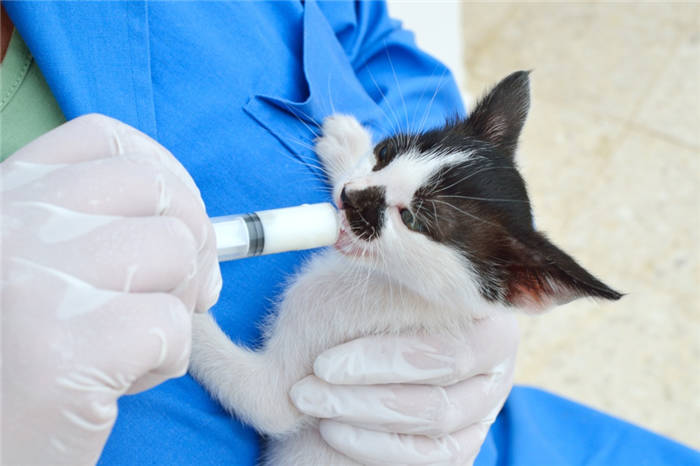
How to properly feed the cat from a syringe – this topic deserves special attention.
At first, the medical syringe will have to make a little bit of work:
The technology is then simple: the syringe is filled with pate or liquid food, which is then squeezed directly into the cat's mouth. The elongated spout of the syringe helps to feed the cat comfortably and also protects the owner's hands from sharp teeth and claws. A cat will sometimes grasp the syringe with its paws while eating in order to defend itself.
If the cat trusts you and is calm, you can put it on your lap and it will accept food from your hands or the syringe. He does not have to open his mouth wide. A small gap between his teeth will be enough to put the syringe in.. The tool should be held correctly and should not be directed straight down the throat, but behind the cheek. Cat's muzzle may be slightly raised, but it should not be thrown back too much.
Feeding cats with a syringe should be done calmly, without any hurry.:
- It's better to give food in small portions, so that the cat has time to swallow it.
- Make sure that the liquid does not get into the cat's windpipe.
- It is advisable to squeeze the food when the cat exhales, and when breathing in, suspend the feeding.
- If the cat swallows food unsuccessfully and starts coughing. Feeding should be paused, allow the animal to come to its senses, cough, calm down, and then you can continue the procedure.
Possible difficulties
Many pets do not like violence over themselves. A kitten will put up little or no resistance and can be handled easily, but narcissistic adult cats will probably resent the owner's actions and will actively resist. One should call a member of the household to help and hold the cat. When animals see someone else besides the owner, they calm down a bit and meow pitifully to arouse sympathy. Confronting two people is much harder than confronting one – cats understand this and instinctively obey. So feeding a sick cat with a syringe is not difficult.
If there are no helpers nearby, you should take a thick towel or blanket and wrap the cat firmly in it, leaving only the head outside. Then he can freely feed him. To unclench cat's teeth you should put the palm of your hand on his head and put your index and thumbs into his mouth cavity behind his fangs. The cat reflex will work, and the animal will open its mouth by itself.
During the procedure it is not desirable to make sudden movements and raise your voice, because the unexpected and frightened the sick cat might choke. You love your cat, so talk to him gently. Hearing a calm, confident tone will allow the cat to calm down and swallow its food normally.
In kittens and adult cats, you should always maintain a normal water balance in the body. Dehydration can turn into a big problem, especially if you have a disease. If the cat or cat refuses to drink water, add a little liquid to the food. The bowl must always be clean and the water fresh. Cats are clean creatures, so they will not drink from dirty dishes. Change the water in the bowl every day.
For a successful fight against the disease, the pet must be well fed, then after recovery he will be very grateful to you.
Forced feeding of cats
So, how to force-feed a cat? Before proceeding with the procedure, you need to familiarize yourself with the general nuances. It should be remembered that the manipulation is carried out only after consulting with a veterinarian and making an accurate or preliminary diagnosis.
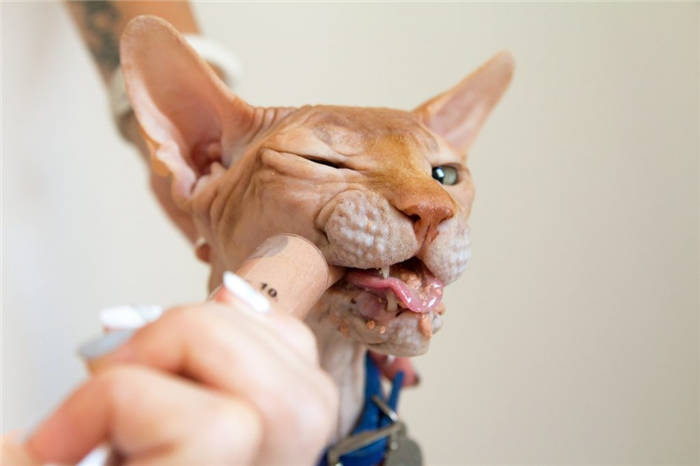
What can I feed?
The choice of food may depend on the reason why the cat is starving:
- If there is a medical condition, the veterinarian selects the appropriate diet. Generally these are therapeutic industrial diets or a corrected home diet;
- If the food refusal was provoked by external factors, these should be eliminated first. Then the cat is offered the food that he likes best and appeals to him. At the same time, the food should be fresh, not cold and have a pleasant aroma for the cat.
How often should the procedure be carried out?
By their nature, cats usually eat often, but in small portions, so it is recommended to feed an adult every 4-6 hours, an animal up to a year – every 3-4 hours.
At the same time, the amount of food depends on the condition, age and duration of starvation of the pet.
Periodically, you should offer the cat to eat in normal conditions from its usual bowl.
Contraindications
Force-feeding cats may be harmful in the following cases:
- If intestinal obstruction is suspected;
- If vomiting accompanies every meal at any time (self-administration of anti-emetics is not permitted in this case, the physician should be consulted beforehand);
- if the procedure causes the cat acute stress.
How to force-feed a cat?
If the manipulation is carried out at home, using the method that best suits the pet and the owner, then the feeding should not cause the cat any discomfort, as the main goal is to restore appetite.
Organization of the procedure
For forced feeding of cats, it is required to prepare in advance:
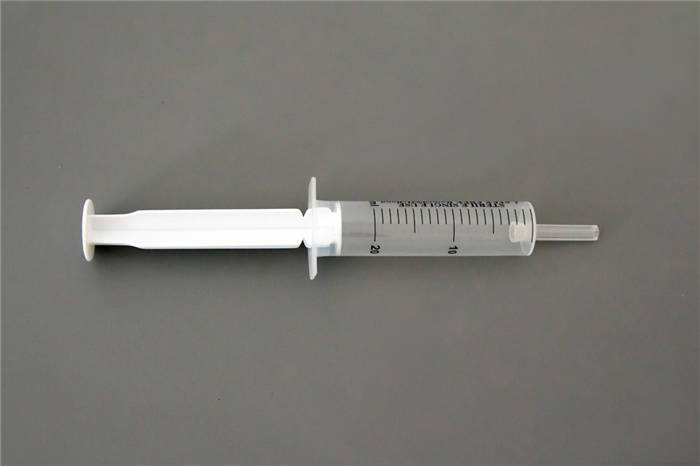
- Food in liquid form (industrial or homemade). For this purpose, it is ground to a state of pate. When feeding through a syringe, the mass is additionally diluted with a small amount of water to have a more liquid consistency;
- All the necessary items – syringe, tissues, towels. Since some types of feed may not pass through the cannula of an ordinary syringe, this hole should be widened in advance. For this purpose, remove the needle and cut off the plastic spout on the syringe. The hole is enlarged with a knife so that the needle cap could fit into it (from it, in turn, a piece with a closed part is cut off). This way the diameter of the resulting tube will increase, and feed will pass freely. In addition, you can buy a special syringe for feeding weakened animals;
- The place where the feeding will take place should be well lit, without any pungent smells or sounds, and with a comfortable temperature and humidity;
- Before the procedure, the cat should be brought in for a few minutes to adjust, stroking and talking to it.
Feeding from the finger
The cat is placed on a table or in your lap. The food from the hand is offered to sniff first. You can lightly smear the animal's nose and lips to lick it off. With one hand, fix it by the withers (or by the scruff). If necessary, you can swaddle the pet with a thick cloth. So that the paws are hidden and the head remains freely accessible, or you can use a special fixing bag for animals. With the finger of the second hand spread the food on the tongue or upper palate. The muzzle is gently held by lightly running the fingers from the chin to the throat several times. Until the animal swallows a portion of food.
How to force-feed the cat?
You will need liquid food and a syringe without a needle. First you need to make sure that the cat at least does not refuse water.
But we have Tikhon, when he was sick, could not even drink. He put a bowl of water under his nose, and he pretended not to notice it.
So we even fed him with a syringe. And we tried to do it several times a day – 4-5 times a little.
And also fed him liquid soup. We took the soup and fed him by sticking it between his fangs at the side. Exactly from the side, because cats have a free space between their fangs there.
But be careful, because even though the cat is weakened, he may break free, bite or scratch. Out of the last, as they say, strength.
Hold him firmly by the withers with one hand, but do not lift him up. Let him stand on the surface with all his paws. If the cat feels the support, it will not panic and start swinging its paws.
How many days should a cat be force-fed?
If a cat is force-fed, it will know after the second time that it has been fed.
It may sound funny now, but both Tikhon and Vaska, when they were sick – immediately realized that they were fed, not tortured. And from the second time they began to resist less.
After all, what can we do? We can only shove food into the cat's mouth with a syringe and he will swallow it himself. Cats can't spit, and they reflexively start swallowing.
But if the cat sneezes or shakes its head, everything around it, including you, will be splattered.
In any case, as we got in practice, we had to feed for 3-4 days, and then the cats themselves begin to slowly eat and drink.






